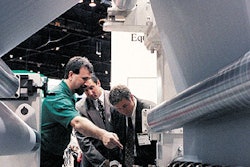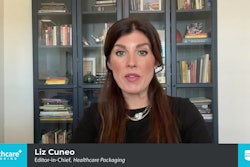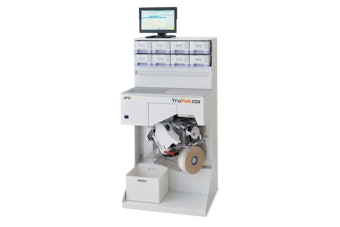Question: Do you have any particular strategy for coping with the need for such versatility?
Billington: We work very hard at what we call late-stage customization. Essentially it boils down to a fairly generic blister-pack that you customize for specific language requirements only at the end. The carton and the leaflet insert, and perhaps the labeling on the carton, are the components that get customized the most.
Question: What has changed in pharmaceutical packaging in the past few years?
Billington: We’re seeing greater reliance on electronic systems to identify product quality and to verify product ID. There used to be considerably less of this outside of the sterile side of pharmaceutical packaging, where it’s been ongoing for some time. But now we’re seeing it more on the relatively straightforward blister-pack business, too.
Question: What about counterfeiting?
Billington: As contract packagers, it’s a bit less of an issue for us since we don’t own the product or brand. We use the packaging designed by our customers. But we are beginning to see holograms, microprinting, and other such technologies with greater frequency.
Question: Any changes in materials worth noting?
Billington: We are definitely seeing a movement toward more sophisticated laminations aimed at lengthening shelf life. Also, a third of the work we do is cold-form foil as opposed to thermoformed materials. Five years back, it would only have been about five- to ten-percent cold-formed foil. Fortunately, we’ve come up with some proprietary developments in cold-forming tools to keep their cost down.
—By Pat Reynolds, Editor, Packaging World
Billington: We work very hard at what we call late-stage customization. Essentially it boils down to a fairly generic blister-pack that you customize for specific language requirements only at the end. The carton and the leaflet insert, and perhaps the labeling on the carton, are the components that get customized the most.
Question: What has changed in pharmaceutical packaging in the past few years?
Billington: We’re seeing greater reliance on electronic systems to identify product quality and to verify product ID. There used to be considerably less of this outside of the sterile side of pharmaceutical packaging, where it’s been ongoing for some time. But now we’re seeing it more on the relatively straightforward blister-pack business, too.
Question: What about counterfeiting?
Billington: As contract packagers, it’s a bit less of an issue for us since we don’t own the product or brand. We use the packaging designed by our customers. But we are beginning to see holograms, microprinting, and other such technologies with greater frequency.
Question: Any changes in materials worth noting?
Billington: We are definitely seeing a movement toward more sophisticated laminations aimed at lengthening shelf life. Also, a third of the work we do is cold-form foil as opposed to thermoformed materials. Five years back, it would only have been about five- to ten-percent cold-formed foil. Fortunately, we’ve come up with some proprietary developments in cold-forming tools to keep their cost down.
—By Pat Reynolds, Editor, Packaging World



















